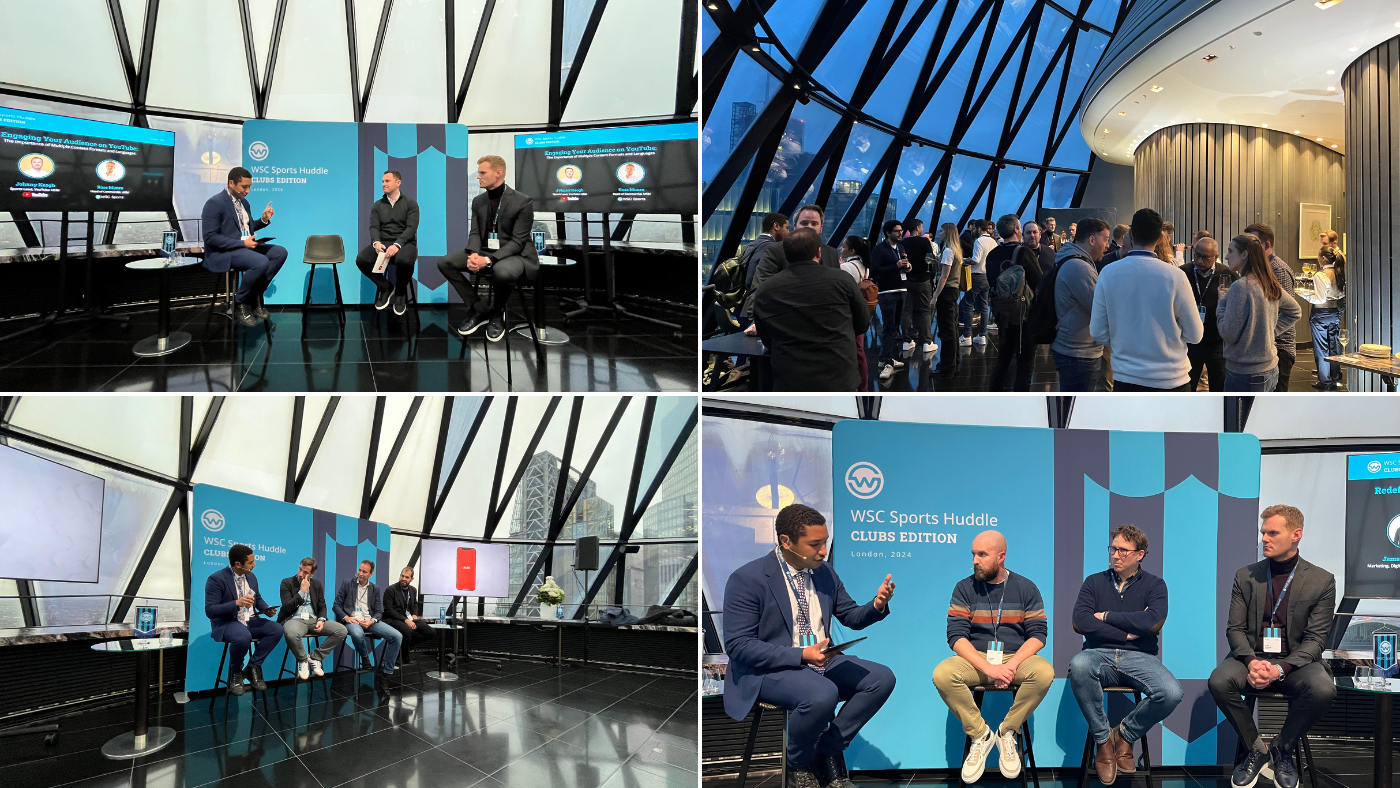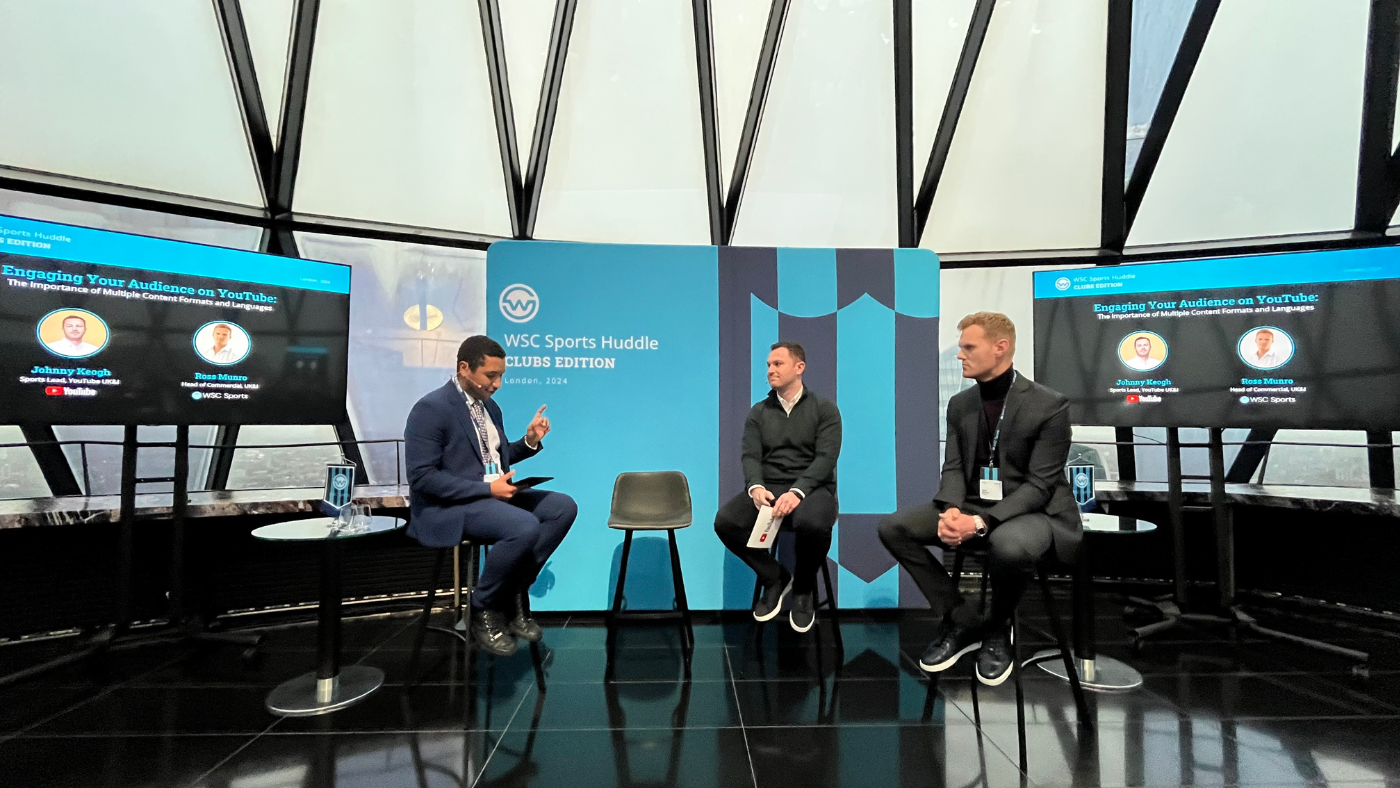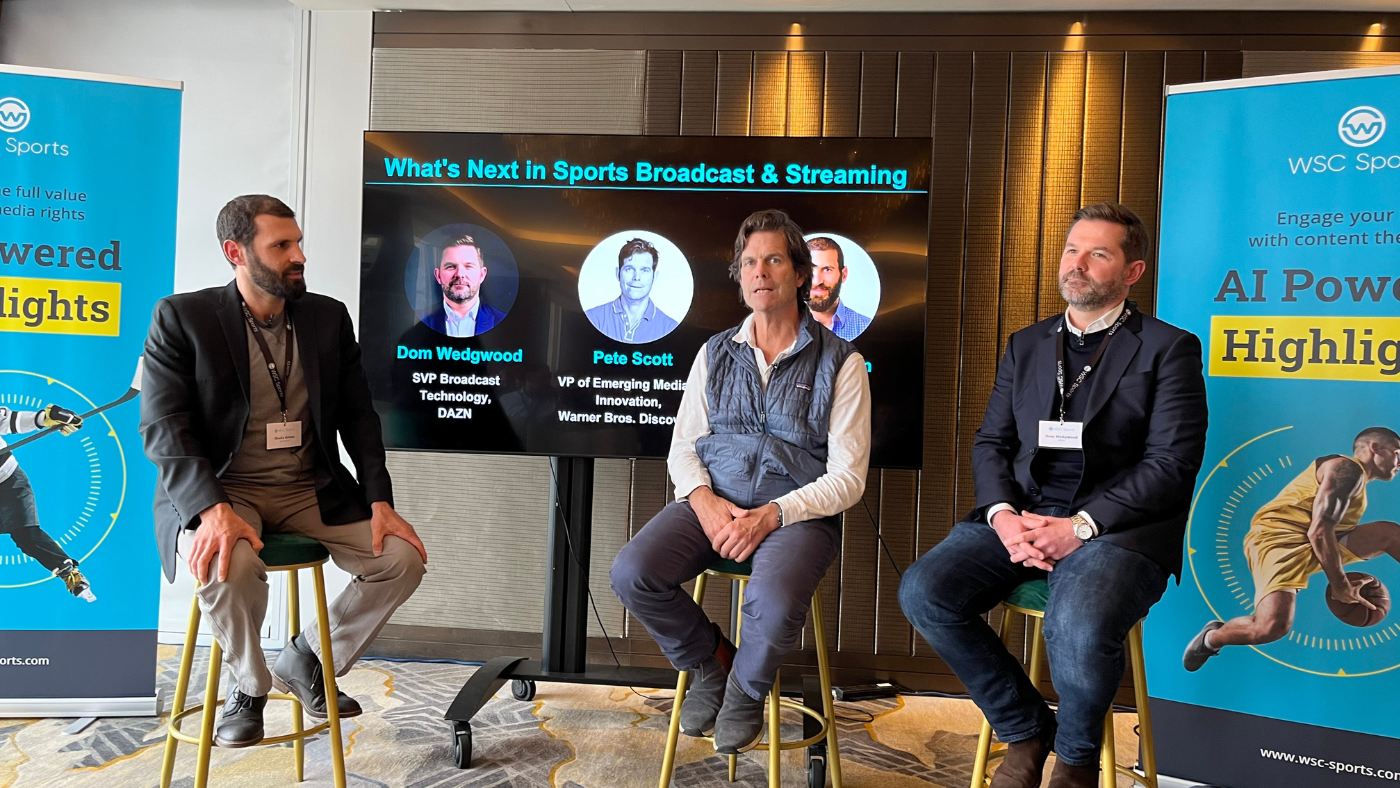Kicking-off the new year in style, WSC Sports hosted over 80 executives from the most well-known teams and leagues in Europe at the top of the iconic Gherkin building. The conversation centered on recent innovations in sports content, and over the course of the day, several themes emerged, including the use of fan data, engaging fans before and after live games, building digital communities, and of course, how gen-AI will impact the future of sports content.
Leveraging Fan Data to Personalize Content
Given the fact that today’s sports fans consume the majority of their content on the internet and social media, it’s essential that teams act like tech and media companies to better understand their audiences. Key to that is fan data, specifically, using it to deliver personalized content to fans. The opportunity is ripe for teams and leagues to capture fan data on their owned and operated platforms—something they’re not able to do on social media. That was the primary goal of LALIGA when revamping their fan-facing mobile app. Alfredo Bermejo, the league’s Director of Digital Strategy, said that his team was inspired by platforms like TikTok, Snapchat, and YouTube Shorts, and applied similar strategies when building their app.
“We wanted to transition from an informative approach, where fans primarily check upcoming games and results, to a content-first approach where fans have tons of vertical videos they can scroll through.”
The result has been an increase in KPIs across the board, including number of sessions, average session time, and stickiness. More importantly, the ability to leverage user data from the app—things like geolocation, language, and fans’ favorite teams and players—enables LALIGA to personalize content for their global fanbase in 18 languages.
Engaging Multiple Audiences
Fans are no longer bound to their local team—a marked difference compared to just a decade ago. Several speakers noted that they’ve seen a dramatic increase in interest around specific players and from international fans. Such a shift presents a challenge in the sense that different types of fans have their own unique preferences. So what’s the best strategy to build lasting relationships with vastly different audiences? For some, it has included setting up unique social pages and IPs in different countries and territories. It also includes a steady stream of communication through emails, push notifications, and messaging via social media platforms. The stated goal for multiple organizations is to send news and updates as a service to fans without a heavy focus on monetization. The desired effect is that over time, fans will purchase on their own terms when presented with the right offer, but the more tailored the offering is, the higher the chance they’ll buy.
How to Start the Conversation
A leading European football club has taken the relationship with their fans to a new level, building a digital community and loyalty program from scratch. “We don’t tell the fans what they want, the fans need to tell us. That was the foundation of the idea for building the community,” said the club’s Director of Digital Strategy. But the straightforward idea didn’t exactly translate to a simple project, complicated by the fact that the vast majority of the club’s social followers reside outside of the country. To bridge any language or cultural gaps, the club localizes every piece of content, utilizing the local language, dialect, and slang; and reuses content created by fans to make sure that it looks and feels 100% authentic.
It’s Not Only About Live
YouTube’s Sports Lead in the UK & Ireland, Jonny Keogh, spoke in detail about fan behavior on the platform before, during and after games. Forty-four percent of fans reported looking up related content before a game, and fifty-five and sixty-four percent of fans said they watch sports videos during and after games, respectively. Because YouTube is so popular on mobile, web, and Smart TVs, format options on the platform range from short-form reels to full-length games, interviews, and more. Premiere League team West Ham United’s YouTube channel is a perfect example of how to utilize multiple content formats to engage different types of fans. James Kennedy, the team’s former Head of Marketing and Content, spoke on the need to post a variety of content, and look into subject matter beyond soccer into things like fashion and culture. That could be filming a video of newly signed Ghanaian star, Mohammed Kudus, alongside Ghanaian-British rapper, Guvna B, or discussing the latest fashion trends in player interviews. Beyond the fandom of the team itself is an intense desire from fans to know the players on a more personal level—and that’s just one more avenue to develop a lasting relationship between fans and teams.
The Gen-AI Effect
One common thread woven into all of the speaking sessions was the impact of generative AI and how it will affect the world of sports content. Already there’s been incredible advances in speech-to-text technology, which, applied to sports content, enable things like auto-generated subtitles, and translation into multiple languages. In the not-so-distant future, gen-AI is expected to help automate content even further through analysis of non-game events like player birthdays and identifying archival footage from a specific day to generate content recommendations. With so much speculation around AI and content, and so many products yet to be unveiled, there’s no telling what the future might hold. Stay tuned for next year’s huddle where we promise to keep the conversation going.




